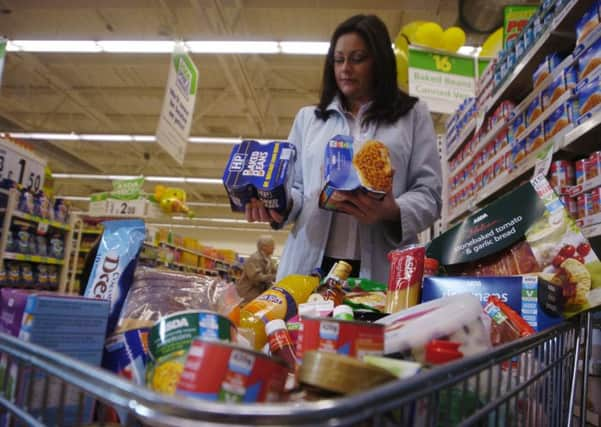Reading between lines on labelling


THE pledge last month from the Scottish Government’s food minister Richard Lochhead to forge a new partnership between Holyrood and the Food Standards Agency to improve standards of food labelling ought to receive a cautious welcome. The new initiative seeks to deliver greater clarity and transparency for the shopper and enable informed decisions to be made about the nature and origin of the food that they purchase.
However, while it is laudable to tackle what he describes as “the scourge of misleading information”, it is surely absurd for the minister to claim that “the issue is not complicated; it’s incredibly simple; the consumer must know what they are eating and where it comes from”.
Advertisement
Hide AdAdvertisement
Hide AdCertainly, unprocessed, single-origin food ought to be capable of clear labelling: whole meat cuts, poultry and fish or vegetables. Any item which undergoes a process concludes at the point of sale a chain of varying length and complexity, be it processed meat, confectionery, juice or bakery products. Whatever it is, any solution comes at a price.
Consumers may still rightly feel uncertain about what they are eating given that a recent survey (in West Yorkshire) revealed almost 38 per cent of 900 samples tested were mislabelled as to content or the benefits they promoted – so there is both an opportunity and an imperative here.
The imperative, of course, lies not in the ministerial announcement; what that actually means remains to be seen. The imperative is the EU Food Information Regulation (FIR), coming into force in the UK on 13 December 2014, requiring a fundamental change to the provision of comprehensive labelling information. And the change is to more than the label – “May contain nuts” will no longer be a gag for stand-up comics brandishing a packet of cashews.
Foods will need to state clearly and in a prescribed manner what ingredients and allergens they do contain, not rely on unverified get-outs of what they might contain. All Food Business Operators (FBOs) in the supply chain should be gearing up for the change – both the production changes required to ensure “free from” and the costs associated with it. If a product can’t contain nuts, consumers need to know and primary suppliers/manufacturers need to improve production processes.
So where lies the opportunity? In theory, for FBOs who can apply the new standards in advance, the opportunity is to be ahead in the game. In practice, it is becoming clear that manufacturers, distributors (and label printers) will struggle to be ready in the absence of clear forward-guidance on how the rules will be interpreted. While the primary party responsible for mis-labelling will be the brand owner, FBO suppliers in the chain to that brand owner will be potentially liable to the brand owner for non-compliance if failures lead (if not to criminal charges) to product recall, adverse publicity or other “brand damaging” events, and if financial losses arise. The forward guidance is not due until March or April, giving very little time to respond to the draft guidance and shape the practical response before being faced with the need come December of “comply or defend”.
And at what cost? The Department for Environment, Food and Rural Affairs calculated that the average cost for a product line label change was £3,260 – over multiple lines, this cost will quickly escalate. Incurring costs of these levels when there is still uncertainty in the guidance will make the bill even harder to swallow.
Expect also a turf war between sales/marketing interests and legal/commercial guidance, fighting for label space. The conflict between the FIR requirements and marketing’s desire to promote a product will involve trade-offs – by marketing? If the ministerial announcement suggests there might be a different approach to labelling in Scotland, this could mean further uncertainty. We can safely assume the intent will not be to have a labelling regime in Scotland distinct from the rest of the UK – but it may be the forward guidance will be different, not least due to the different enforcement regime in Scotland.
It is not unreasonable to ask the minister to tell those involved in the food sector, both involved in supplies into Scotland and out of Scotland, what he envisages being different about labelling. Please reassure the food and drink sector that it won’t be a difference for difference’s sake.
• George is a partner and head of Food & Drink Services at Shepherd and Wedderburn www.shepwedd.co.uk
SEE ALSO